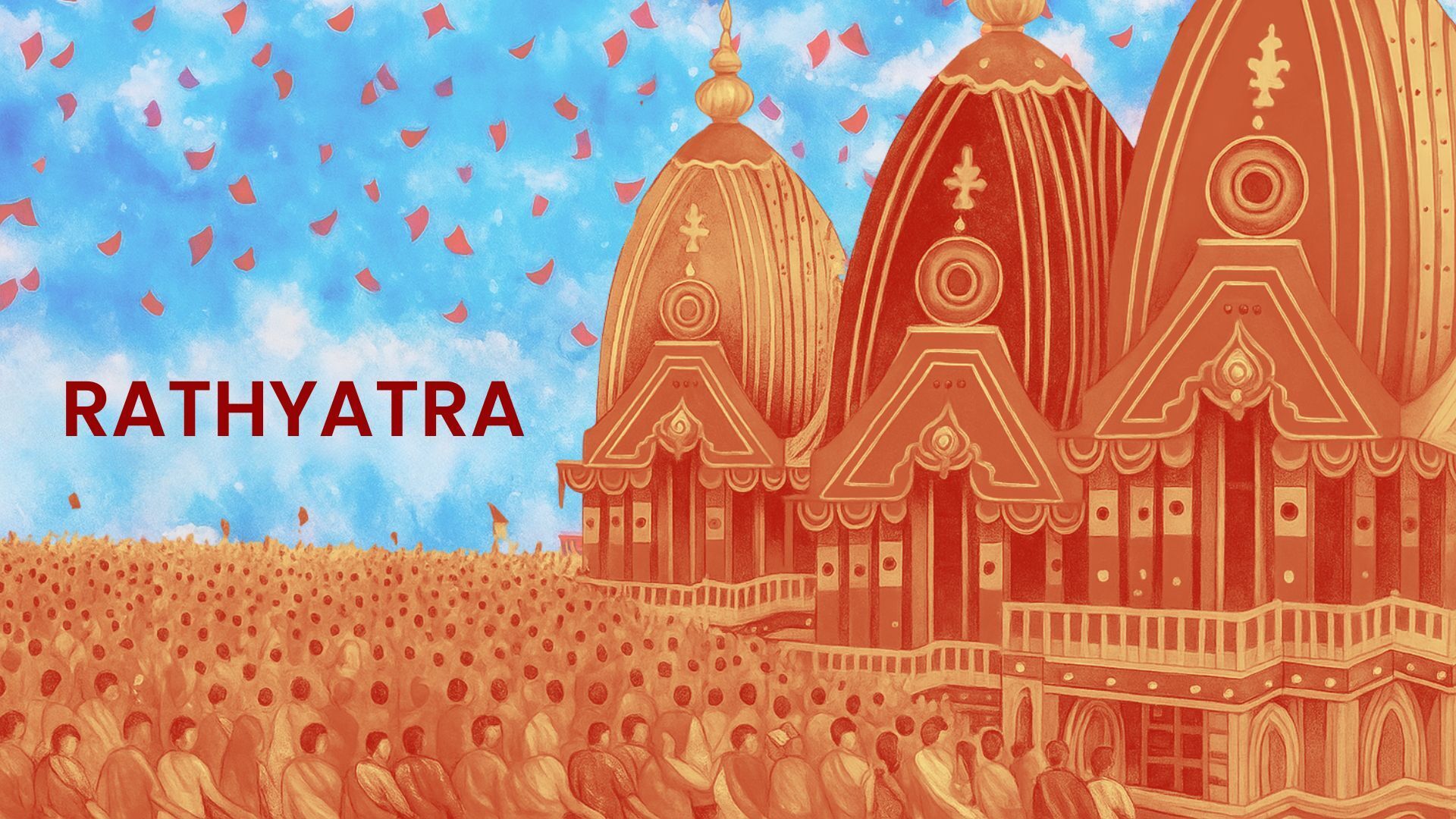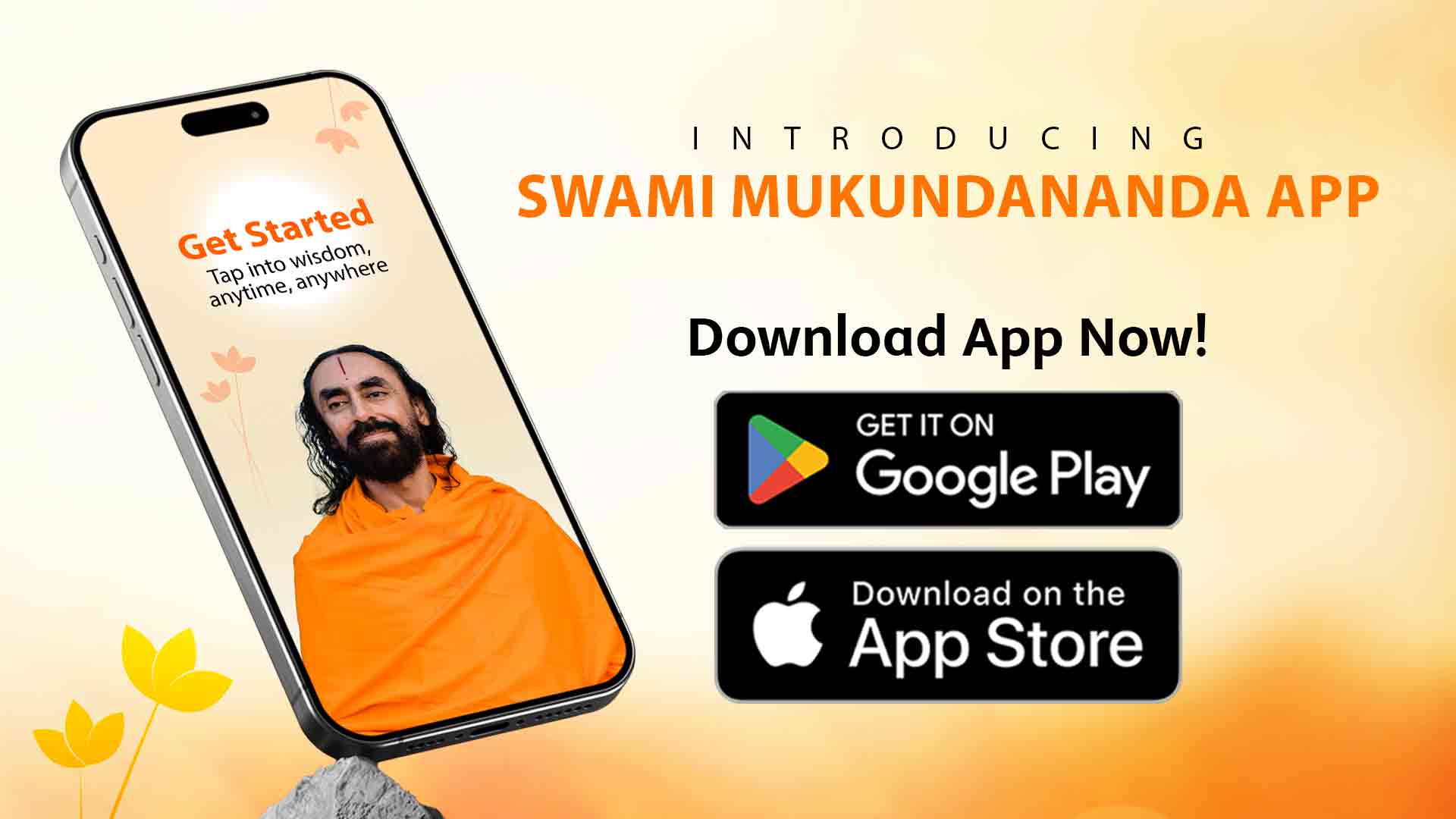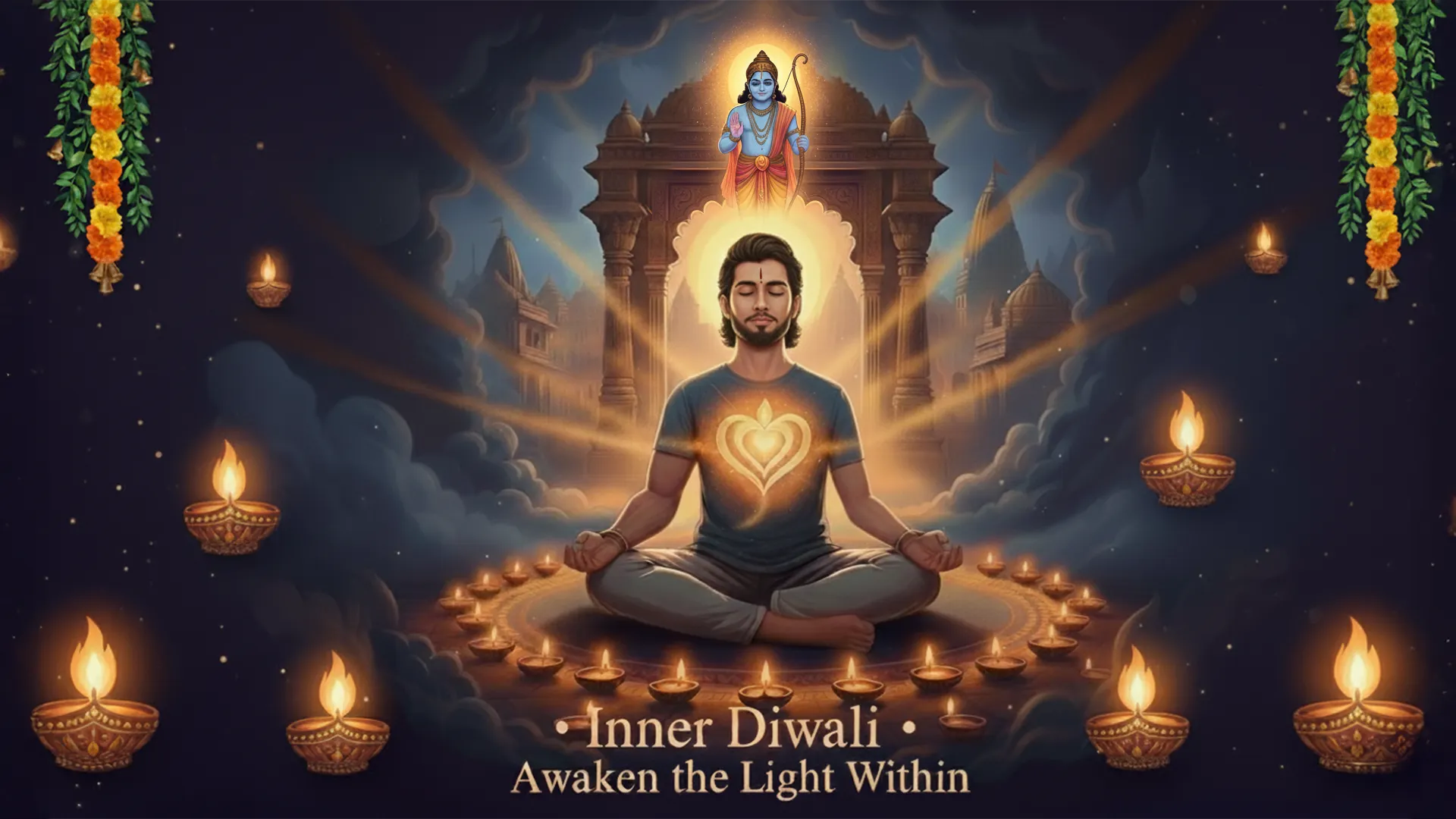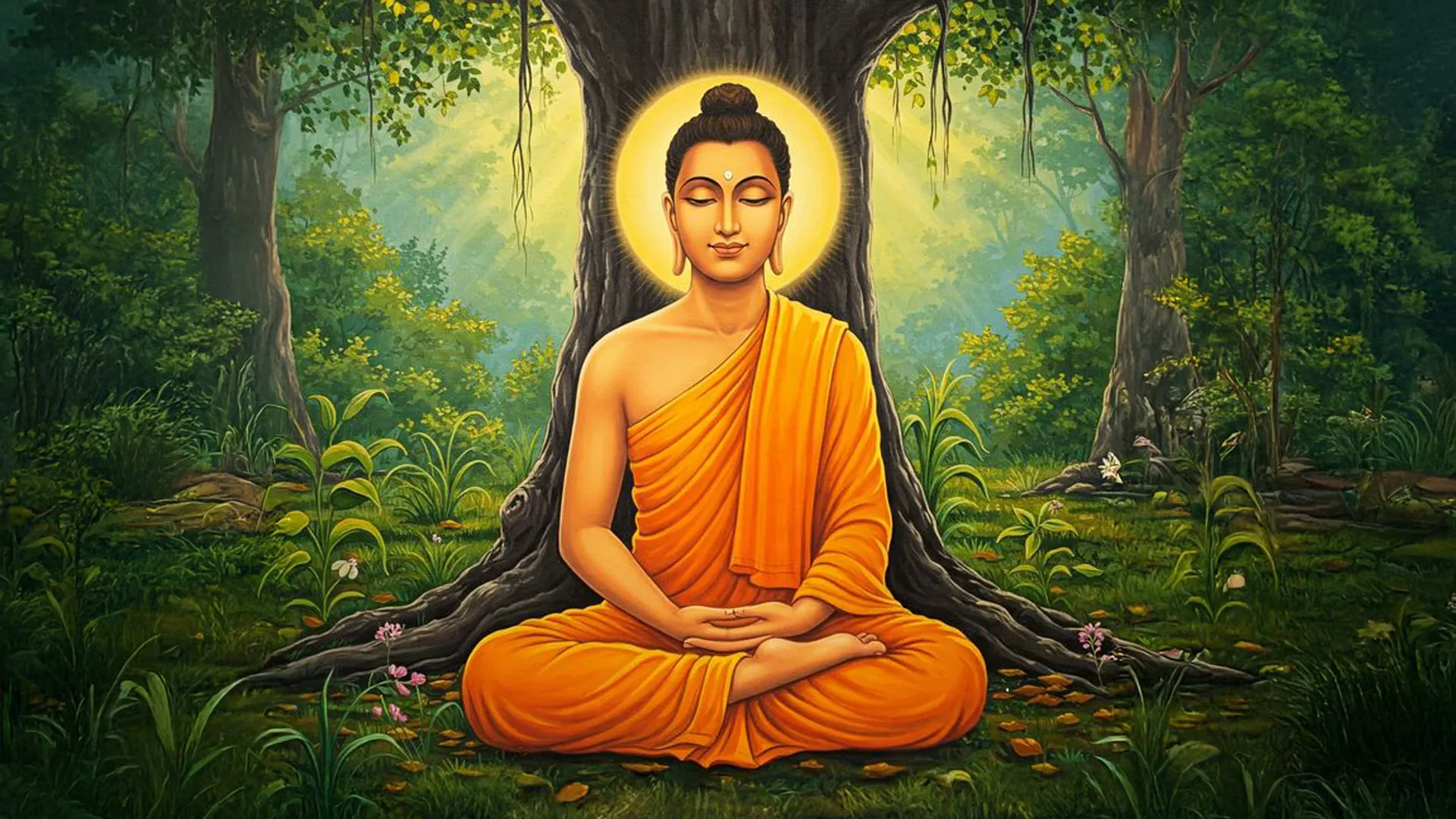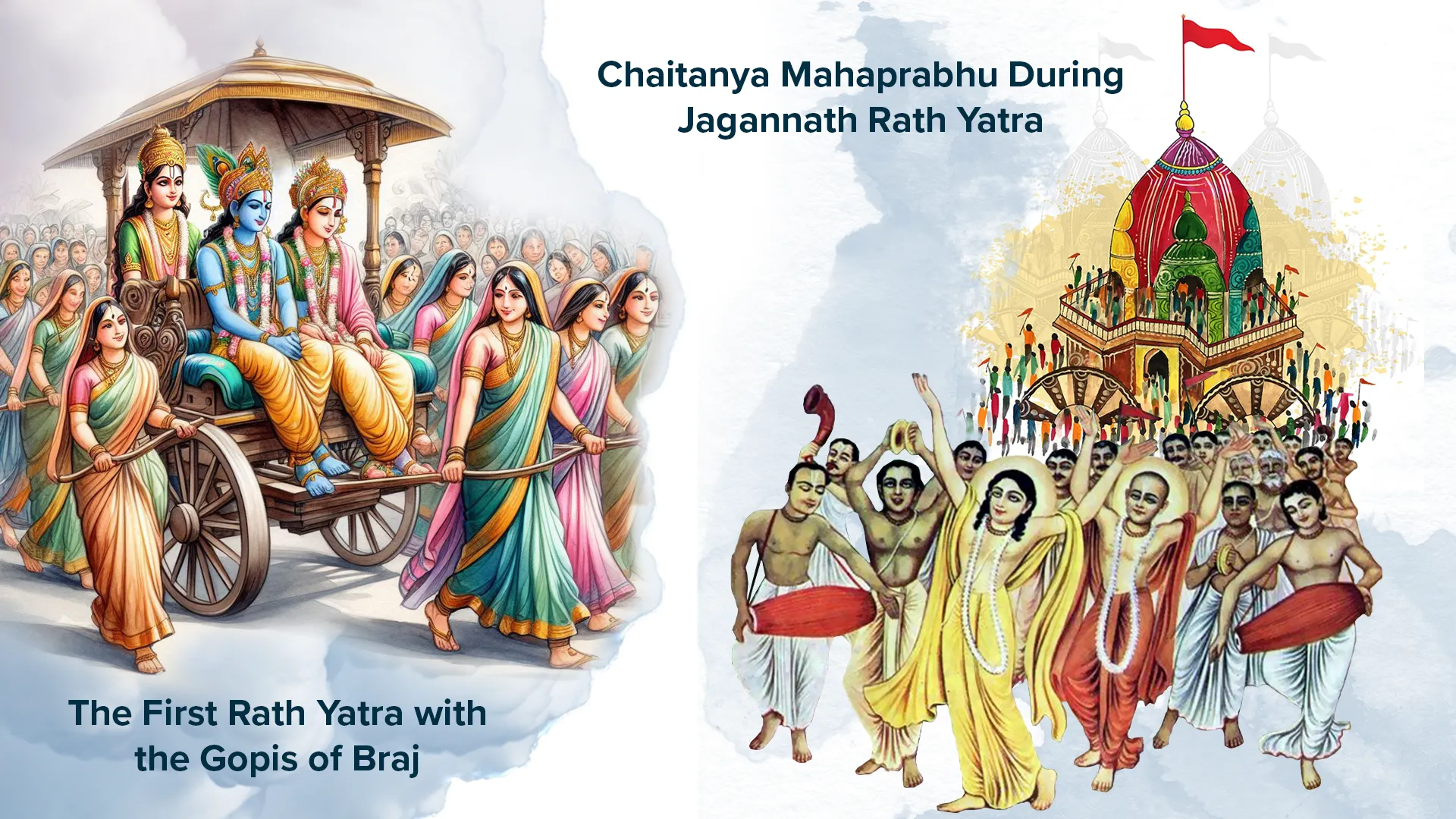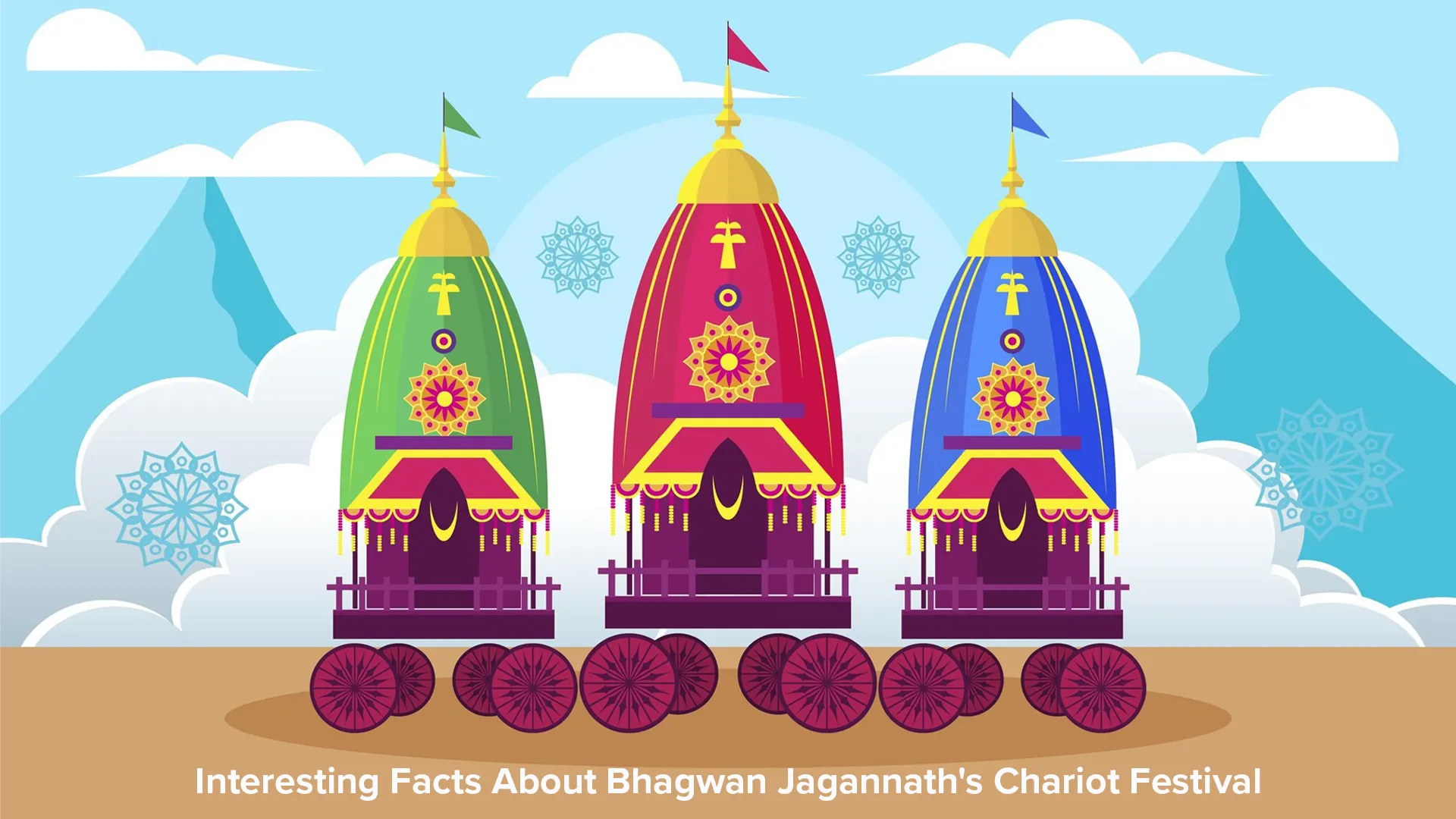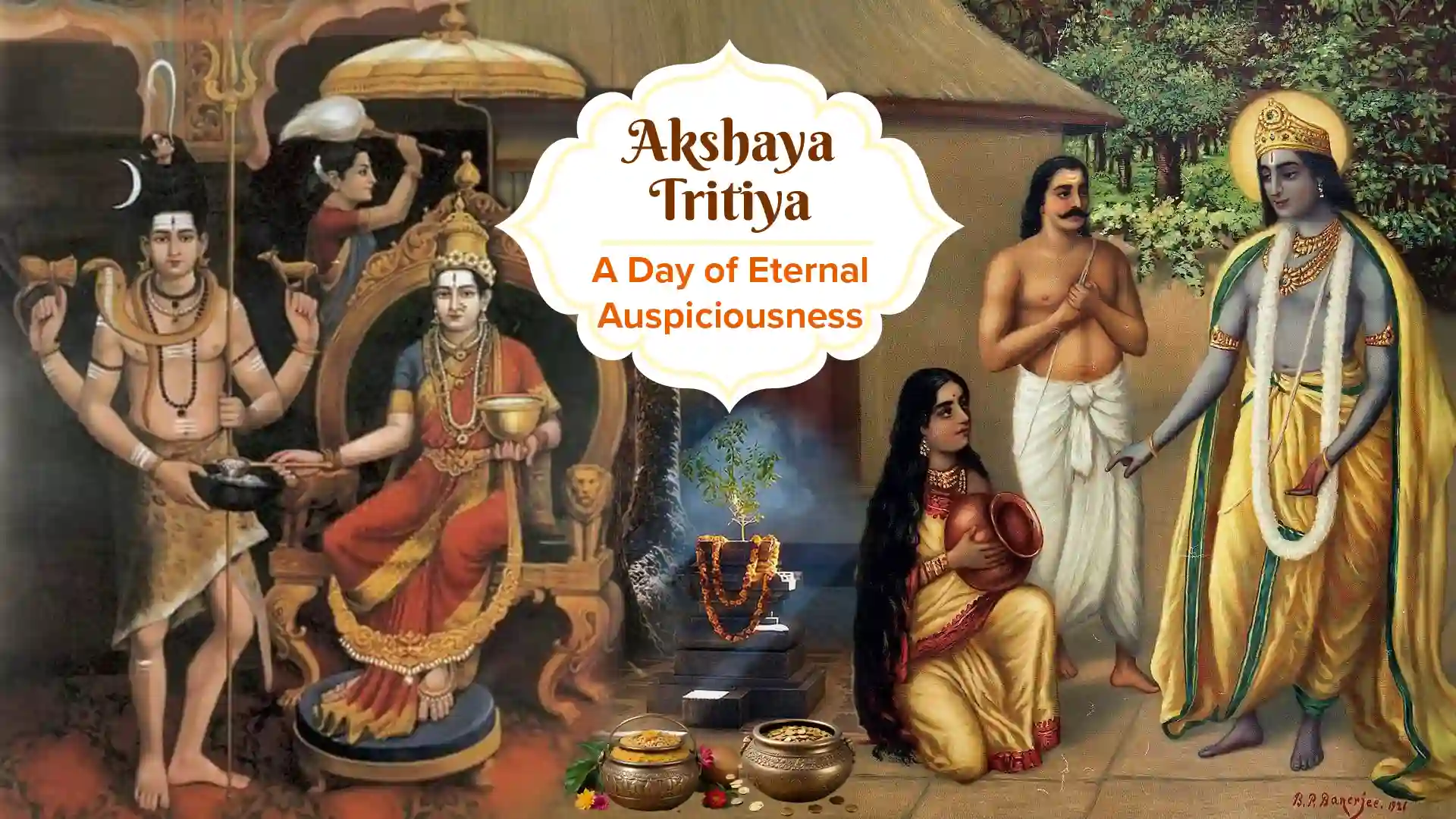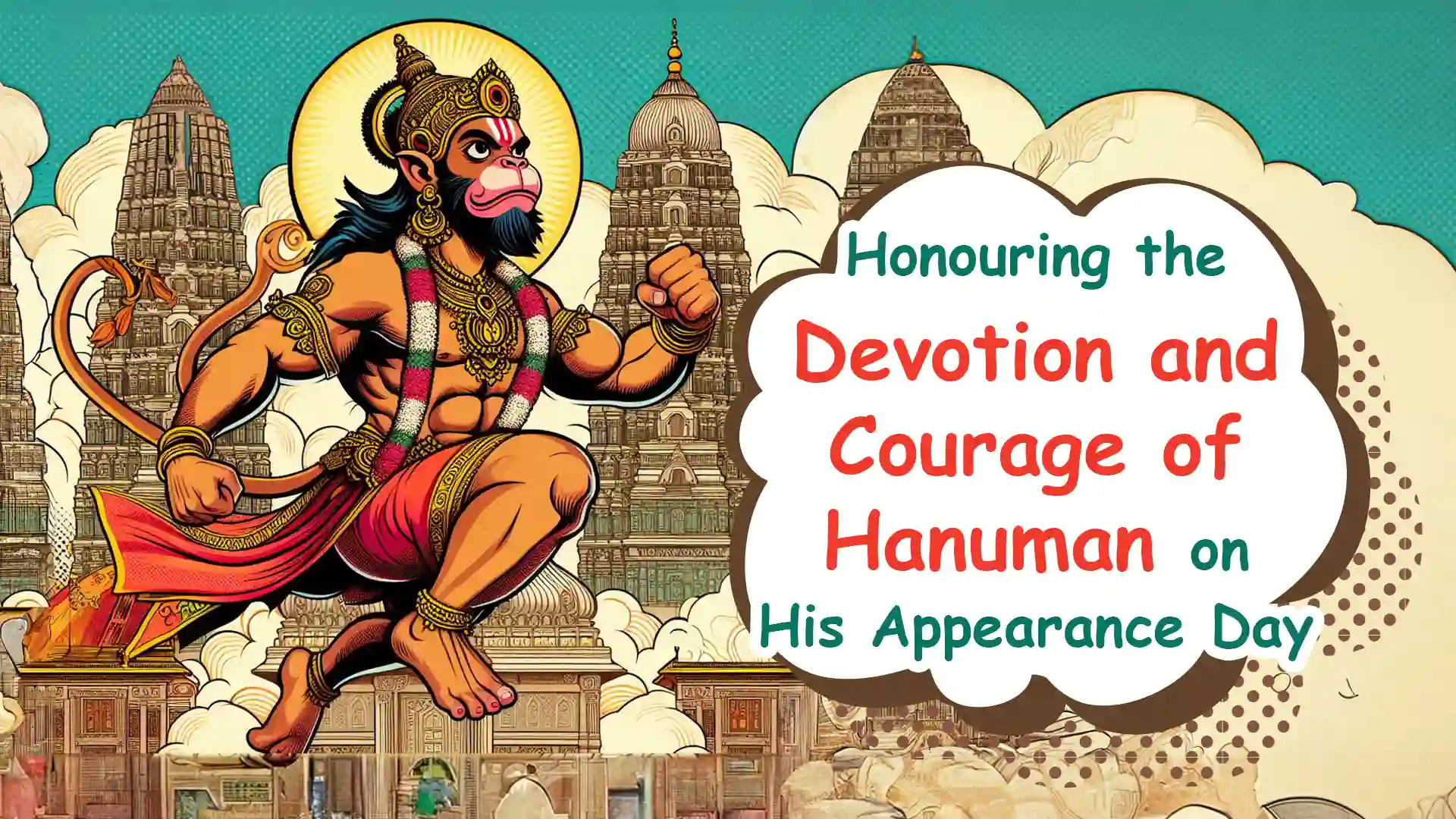In Puri, even the stones weep for God—and the chariots roll on tides of love.
Rath Yatra—the Festival of Chariots—is far more than a spectacle; it is a living hymn of devotion, where the divine descends to dance among mortals. Every year, in the sacred town of Puri, Jagannath, Balabhadra, and Subhadra embark on a symbolic journey from their temple abode to the Gundicha Temple, retracing the eternal play of love between Krishna and His devotees.
Rath Yatra—the Festival of Chariots—is far more than a spectacle; it is a living hymn of devotion, where the divine descends to dance among mortals. Every year, in the sacred town of Puri, Jagannath, Balabhadra, and Subhadra embark on a symbolic journey from their temple abode to the Gundicha Temple, retracing the eternal play of love between Krishna and His devotees.
The Sacred Origin: A Journey Rooted in Divine Love
The Rath Yatra echoes the pain of separation and bliss of reunion between Krishna and the Gopis. When He left Vrindavan for Dwarka, their love only deepened, transforming into pure, selfless devotion (Nishkam Bhakti). At Kurukshetra, during a solar eclipse, the Gopis finally reunite with Him, but they long not for King Krishna, but only for their Shyamsundar of Braj. Moved by their yearning, Krishna allows them to pull His chariot back to Vrindavan in spirit. As the wheels turn, He enters Mahabhav Samadhi—His eyes widen, His limbs still—and for a moment, the universe pauses. Subhadra and Balaram, swept by divine ecstasy, join Him in this trance. The Rath Yatra thus immortalises this divine homecoming.
The Divine Feast: Mahaprasad, Where Food Becomes Love
In Jagannath’s world, even food becomes a bridge to the divine. Through Mahaprasad, we taste not just flavors, but the boundless love of God.
- A Kitchen Blessed by the Divine: The temple’s sacred kitchen (Rasoighar) is one of the world’s largest, where hundreds of cooks prepare 56 offerings (Chhapan Bhog) in earthen pots over a wood fire. It is said, the flavor of Mahaprasad is not crafted by cooks, but completed by the touch of divine will.
- The Miracle of Equality: Mahaprasad is served to all—kings and beggars, saints and strangers—for in Jagannath’s eyes, love knows no hierarchy.
- The Taste of Liberation: From Kheeri (Krishna’s favorite rice pudding) to Poda Pitha (a burnt cake, reminiscent of His stolen butter), each dish carries the energy of divine grace. Chaitanya Mahaprabhu once wept, saying, “This is not food—this is Krishna’s love made edible.”
During Rath Yatra, this sacred feast travels with the chariots, feeding millions and proving that the Lord’s compassion knows no bounds.
Chaitanya Mahaprabhu: The Embodiment of Radha’s Longing
Krishna was so captivated by Radha’s love that He wished to experience it Himself. To taste the sweetness of Her devotion, He descended as Chaitanya Mahaprabhu.
In Puri, Mahaprabhu participated in Rath Yatra with unmatched devotion. To him, Jagannath was not just an idol, but his beloved Krishna. His yearning was so intense that the temple doorframe melted under his loving touch—imprinted with his divine bhav to this day.
In Puri, Mahaprabhu participated in Rath Yatra with unmatched devotion. To him, Jagannath was not just an idol, but his beloved Krishna. His yearning was so intense that the temple doorframe melted under his loving touch—imprinted with his divine bhav to this day.
When Jagannath 'falls sick' before the festival and temple doors close, Mahaprabhu travels to Allarnath, where his longing melts the very stone he lies upon.
During the Yatra, Mahaprabhu orchestrates the kirtans, dance groups, and instruments with divine rhythm. His dance before the chariot doesn’t just re-enact Radha’s longing—it becomes the very pulse of her soul calling Krishna home. His love transforms the Rath Yatra into a spiritual symphony of union, grace, and ecstasy.
His passionate dance in front of the chariot elevated the Yatra into a cosmic celebration of divine union.
The Grand Celebration: Chariots, Crowds, and Cosmic Grace
Three towering chariots are built anew each year:
- Nandighosa (Jagannath): Red and yellow, adorned with the Sudarshana Chakra—a promise of protection.
- Taladhwaja (Balabhadra): Blue and red, crowned with the plough—symbol of dharma’s strength.
- Darpadalana (Subhadra): Black and red, draped in silk—the gentle power that soothes storms.
As millions chant "Jai Jagannath!", the deities are carried in a grand procession (Pahandi) to their chariots.
- The Pull of Faith: Devotees believe that touching the ropes grants moksha, for this is no ordinary act—it is dragging the divine into one’s heart.
- The Return (Bahuda Yatra): After nine days, the deities journey back to the main temple—but not before Mahaprasad is distributed to all, sealing the bond between God and devotee.
The Sacred Legend: King Indradyumna and the Birth of the Jagannath Mandir
As described in the Purushottam Kshetra Mahatmya of the Skanda Purana, King Indradyumna of Avanti was a devout seeker, yearning to witness the Supreme Lord with his own eyes. During a sacred gathering, a wandering pilgrim revealed to him the existence of a hidden deity—Neel Madhav, enshrined deep within the forests of Odra Desha (modern-day Odisha).
Eager to behold this divine form, the king sent his trusted priest, Vidyapati, on a sacred quest. With the help of Viswavasu, a tribal chief of the Savara community, Vidyapati discovered Neel Madhav. But by the time the king arrived, the deity had mysteriously vanished. Heartbroken, Indradyumna resolved to fast unto death. That very night, Bhagwan Vishnu appeared in his dream, instructing him to build a grand temple in Puri and await a divine log (Daru Brahman) floating in from the ocean.
Soon, the sacred log appeared, and Vishwakarma, the celestial architect, came disguised as a carpenter. He agreed to carve the deities under one condition: he must not be disturbed. But when the queen, worried about his silence, urged the king to open the door—they found the idols incomplete and the carpenter gone. Yet, these forms were accepted by the Lord Himself. Their wide, unblinking eyes—filled with compassion—still gaze beyond time and space. To this day, they are worshipped in that very form, a reminder that what seems incomplete to us may be perfect in God’s design.
Jagannath: The Heartbeat of Odisha
To the people of Odisha, Jagannath is not just God—He is family. Affectionately called "Jagga," "Kalia," or "Chakka Ankhi" (One with round eyes), His divine leelas are woven into every Odia poem, song, and dance. During Rath Yatra, when His chariot halts mid-route, devotees lovingly scold Him. Legend says He enjoys these playful rebukes so much, He refuses to move without them—because in Jagannath’s world, love is informal, intimate, and overflowing.
Rath Yatra: A Global Symphony of Devotion
From Puri to Paris, from New York to Nairobi, the chariots of Jagannath roll through streets and hearts alike. In London, saffron-robed devotees sing “Jai Jagannath” under rainy skies. In Durban, the scent of turmeric-laced Prasad mingles with the ocean breeze—proof that Puri’s heart now beats worldwide.
And with every rolling chariot, Mahaprasad travels—uniting souls in a feast of divine love.
For in Puri, even food becomes love, stones melt for God, and every heartbeat whispers—Jai Jagannath!
For in Puri, even food becomes love, stones melt for God, and every heartbeat whispers—Jai Jagannath!

